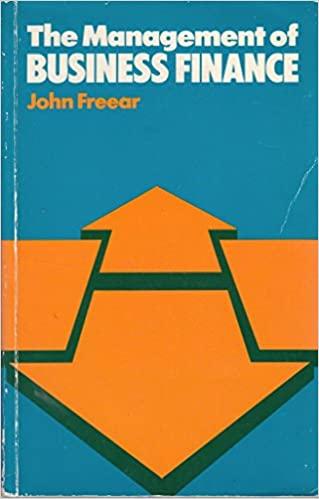Answered step by step
Verified Expert Solution
Question
1 Approved Answer
An Italian company is considering expanding the sales of its cappuccino machines to the U.S. market. As a result, the idea of a setting up


An Italian company is considering expanding the sales of its cappuccino machines to the U.S. market. As a result, the idea of a setting up a manufacturing facility in the U.S. should be explored. The company estimates the initial demand in U.S. will bring in an annual operating profit of $2.500,000, which is expected to keep track with the U.S. price level. The new facility will free up the amount currently exported to the U.S. market. The company presently realizes an annual operating profit of 1,000,000 on its U.S. export, which keeps track with the price level in Italy. The manufacturing facility is expected to cost $24 million. The company plans to finance the project with a combination of debt and equity capital. The new project will increase the company's borrowing capacity by 10 million, and the company plans to borrow only that amount. The city in which the facility will be built has promised to provide a 5-year loan of $7.5 million at 6% per annum. The U.S. IRS allows the company to straight-line depreciate the new facility over a 5-year period. After that time, the company plans to terminate the project and sell all molding equipment, which accounts for 50% of the project's cost. The company estimates that the after- tax salvage value of molding equipment will be no more than 25% of its original book value. Corporate tax rates in the U.S. and Italy are the same as 35%. The long-term inflation rate is expected to be 3% in the U.S. and 5% in Italy. The current spot exchange rate is $1.5/. The Italian company explicitly believes in PPP as the best means to forecast future exchange rate. The company's U.S. sales affiliate currently holds $1.5 million ready for repatriation back to Italy. The money was accumulated under a special tax concession rate of 25%. If the fund were repatriated, additional tax will be due. The company's weighted average cost of capital is 11%, cost of dollar borrowing is 9%, cost of Euro borrowing is 10%, and cost of equity is 18%. The all-equity Euro cost of capital is 15%. Time left 1:54:55 4 Paragraph Times New R 5 (18pt) (3) Calculate the benefit of using concessionary loan. An Italian company is considering expanding the sales of its cappuccino machines to the U.S. market. As a result, the idea of a setting up a manufacturing facility in the U.S. should be explored. The company estimates the initial demand in U.S. will bring in an annual operating profit of $2.500,000, which is expected to keep track with the U.S. price level. The new facility will free up the amount currently exported to the U.S. market. The company presently realizes an annual operating profit of 1,000,000 on its U.S. export, which keeps track with the price level in Italy. The manufacturing facility is expected to cost $24 million. The company plans to finance the project with a combination of debt and equity capital. The new project will increase the company's borrowing capacity by 10 million, and the company plans to borrow only that amount. The city in which the facility will be built has promised to provide a 5-year loan of $7.5 million at 6% per annum. The U.S. IRS allows the company to straight-line depreciate the new facility over a 5-year period. After that time, the company plans to terminate the project and sell all molding equipment, which accounts for 50% of the project's cost. The company estimates that the after- tax salvage value of molding equipment will be no more than 25% of its original book value. Corporate tax rates in the U.S. and Italy are the same as 35%. The long-term inflation rate is expected to be 3% in the U.S. and 5% in Italy. The current spot exchange rate is $1.5/. The Italian company explicitly believes in PPP as the best means to forecast future exchange rate. The company's U.S. sales affiliate currently holds $1.5 million ready for repatriation back to Italy. The money was accumulated under a special tax concession rate of 25%. If the fund were repatriated, additional tax will be due. The company's weighted average cost of capital is 11%, cost of dollar borrowing is 9%, cost of Euro borrowing is 10%, and cost of equity is 18%. The all-equity Euro cost of capital is 15%. Time left 1:54:55 4 Paragraph Times New R 5 (18pt) (3) Calculate the benefit of using concessionary loan
Step by Step Solution
There are 3 Steps involved in it
Step: 1

Get Instant Access to Expert-Tailored Solutions
See step-by-step solutions with expert insights and AI powered tools for academic success
Step: 2

Step: 3

Ace Your Homework with AI
Get the answers you need in no time with our AI-driven, step-by-step assistance
Get Started


